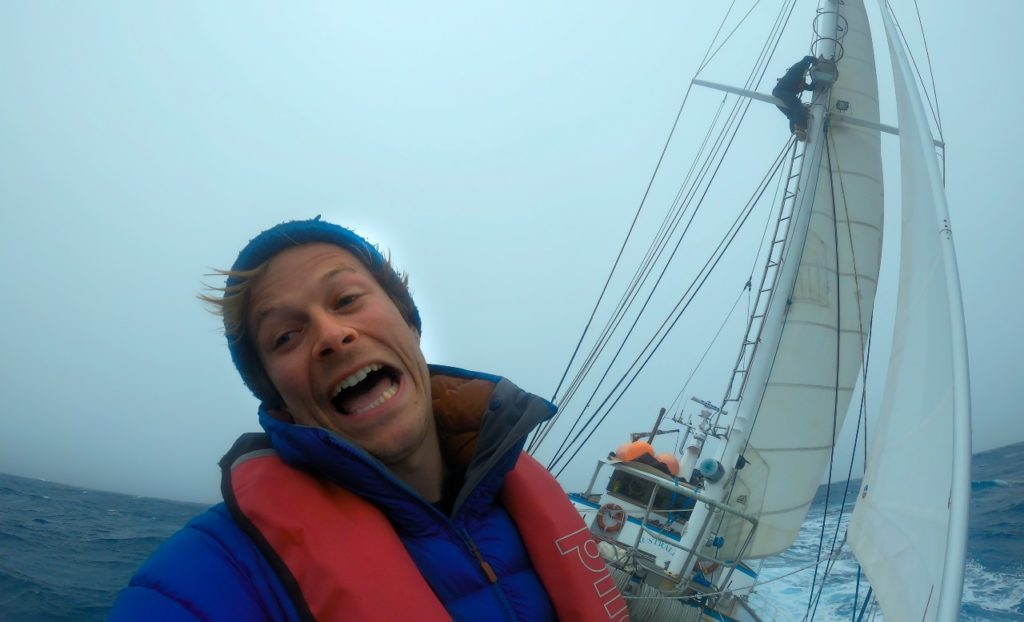
What is more amazing than trekking all the way to Antarctica to witness the second largest animal in the world host a feeding frenzy of multi-wildlife epic proportions? Answer: Finding your head inside of a leopard seals mouth, simply because, well, it happened to be there. And that is the beauty behind the “Epic Adventures with Bertie Gregory.” There are no scripts. Well, most wildlife shows don’t really have scripts, but when you go for a ride with Bertie and his crew, you never know what you are going to run into. And unlike most other shows, that choose to ignore such events for the sake of maintaining focus on their goal, Bertie and crew just roll with it and see where it leads them. Even if that’s headfirst into a leopard seal’s mouth.
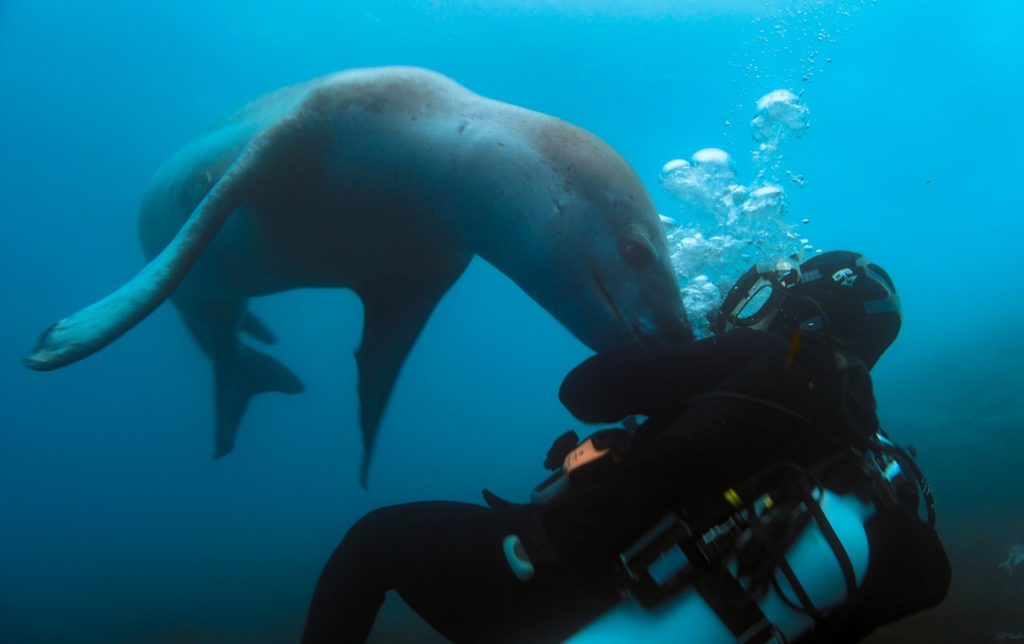
If you are attacked by a wild animal, in 99 percent of the cases, you have done something wrong.”
-Bertie Gregory
It is this sort of non-scripted epic adventure that has kept us glued to Disney+ and National Geographic for this entire Summer. And this month, Bertie has a brand new season of epic adventures that are ready to take us from the brutal cold of Antarctica to the forests of Zambia, along the way encountering penguins, fin whales, lions, grumpy buffalo, and yes, 10 million bats. If this sounds like your kind of thing, you’re going to want to hear Bertie chat with us about his adventures with a leopard seal, Africa’s grumpiest animal, and why 10 million bats should be at the top of your bucket list.
Urbasm: Hey there Bertie. We’ve been looking forward to this.
Bertie Gregory: Hi, how’s it going?
Urbasm: It is going well. Since the show is all about ‘epic adventure’, we want to jump right in with, what has been your most epic and memorable moment for this season?
Bertie Gregory: Well, there have been a lot of memorable moments for sure, but the one that sticks in my head was Antarctica. We were looking for a huge gathering of fin whales, the second biggest type of whale in the world; second to blue whales. We had awful weather as you often get in Antarctica. And so instead of looking for whales, we had taken shelter on the island, and there was a penguin colony there. And all these penguins were jumping into the water, and as they were jumping in, they all looked nervous and hesitant.
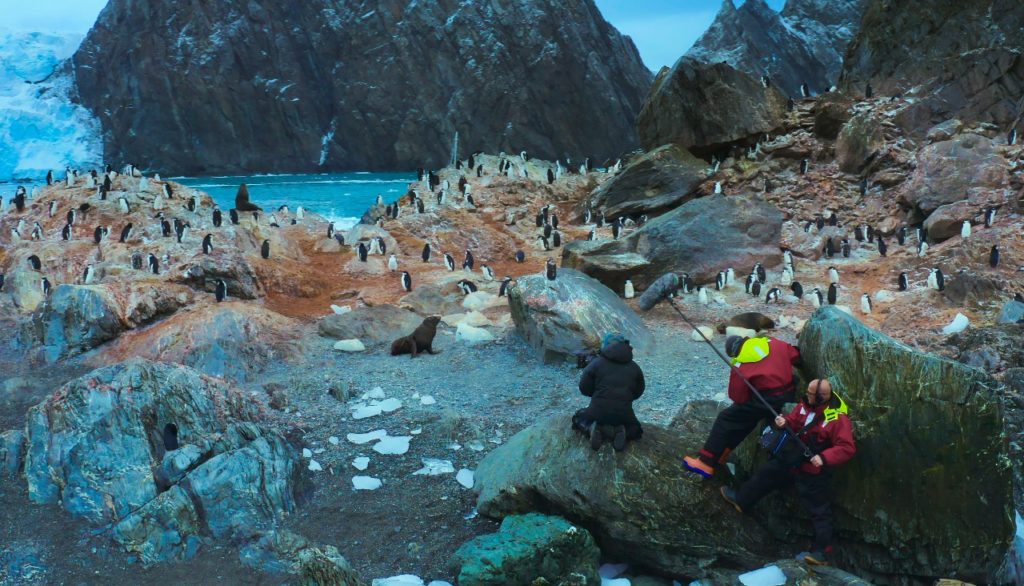
Urbasm: That sounds like a red flag.
Bertie Gregory: There was an enormous leopard seal there. That is sort of the main predator of the penguins, and me and the other camera person, Dan, we thought, well, we don’t just want to film this from above the water, we want to see what is going on. So, we got in the water with the leopard seal, and the water is very cold. It is about minus one-degree Celsius. I think that is about 32 Degrees Fahrenheit. It is salt water and freezes colder than fresh water freezes. So, it is really really cold, and we’re in the water, and this leopard seal, which was huge, comes rocketing over to us, and for about a half an hour… got to know us, really.
Urbasm: (laughs)
Bertie Gregory: This leopard seal had definitely never seen a human underwater in its life, and they are a really curious animal. And they have this massive head like a dragon, big teeth, and because they don’t have hands to figure out what you are… they have to bite you.
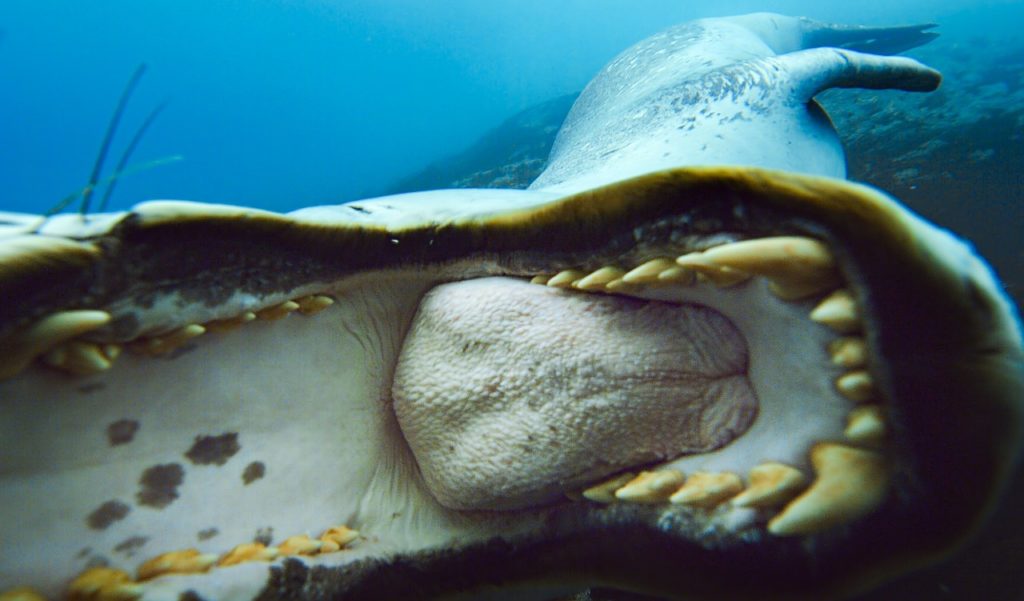
Urbasm: Oh no.
Bertie Gregory: And so, she sort of came over, and not tried to eat us, but was sort of mouthing us. They can open their mouth unbelievably wide, so she had my whole camera in her mouth, diving equipment in her mouth, she had a little nip at my head once, and that was pretty hairy. And in the end, she was getting just a little too confident, so we ended up getting out.
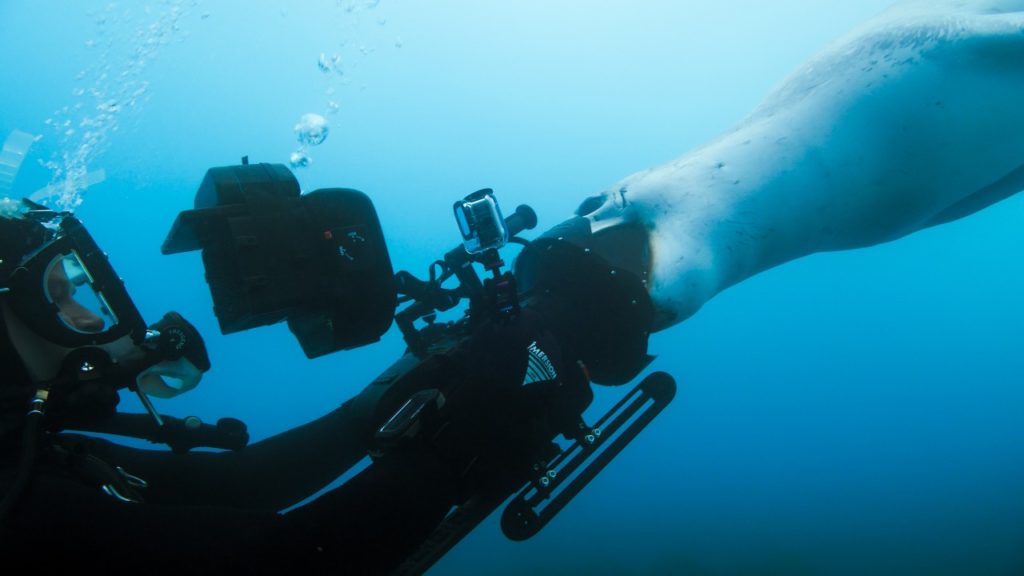
Urbasm: (laughs) Is that going to be in one of this season’s episodes?
Bertie Gregory: How the shows work, is each episode we are going through one giant wildlife event. For the Antarctica episode, we are going for one of the biggest gatherings of fin whales ever, that was our goal. Along the way, it is an adventure, so whatever we bump into we film. So, the whales gather in this massive feeding frenzy, but it is not just whales, you get all the Antarctica animals there, so you get penguins, seals, etc. It’s sort of the nice thing about this show, normally when I have been filming on normal wildlife shows, you have very specialized equipment and regularly you see things that you don’t expect.
Urbasm: Sounds like Vegas.
Bertie Gregory: And often they don’t really fit your story, and so you sort of have to ignore them. The format of this show is as much about wildlife as it is about the adventure to find wildlife, so we sort of film everything we bump into. It is a great way to get some at some new and exciting animal behavior and it means that we can be reactive.
Urbasm: I think that segways into our next question rather well. When it comes to adventure, is there anything that you won’t do?
Bertie Gregory: Well, I feel like a lot of adventure shows, I think they are very macho.
Urbasm: That’s true.
Bertie Gregory: The sort of, ‘We’ll stop at nothing,’ you know, and if you want to climb up the mountain, you’re conquering the mountain. They go around dominating things and that is just not who I am and what the show is about. We have epic adventures, but it is very much about understanding the animals and getting to know them and becoming part of their world rather than trying to sort of beat them. I definitely don’t take myself very seriously. We have a lot of fun and a lot of jokes along the way.
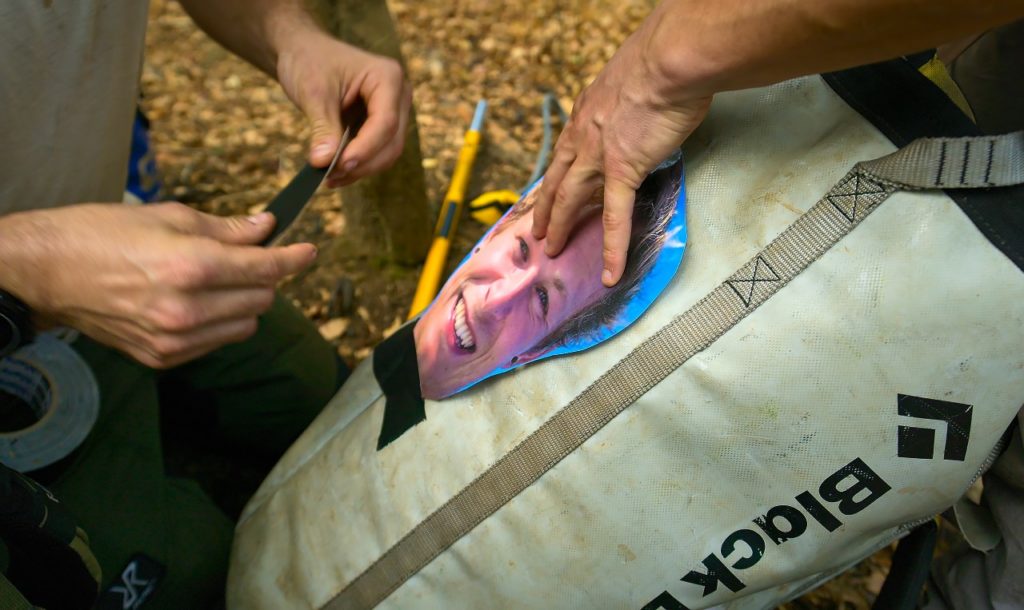
Urbasm: As it should be.
Bertie Gregory: So, to answer your question, is there anything that I won’t do? Yeah, there are lots I won’t do! I think I have a pretty good tolerance for being cold. And I am very driven when it comes to trying to find animals. Boring answer, isn’t it?
Urbasm: (laughs)
Bertie Gregory: I guess all the risks that we take, they are all very calculated, especially when it comes to the wildlife. If you are attacked by a wild animal, in 99 percent of the cases, you have done something wrong. And so we are experts on animals, and we are filming and working with experts to make sure that we understand the animal’s behavior and that they are happy. Because the last thing we would want to do is get attacked. Because that is not good for us, I’ll be missing an arm.
Urbasm: (laughs)
Bertie Gregory: And it is also not good for the animals.
Urbasm: So, what remains to be some of the least explored areas of the world today?
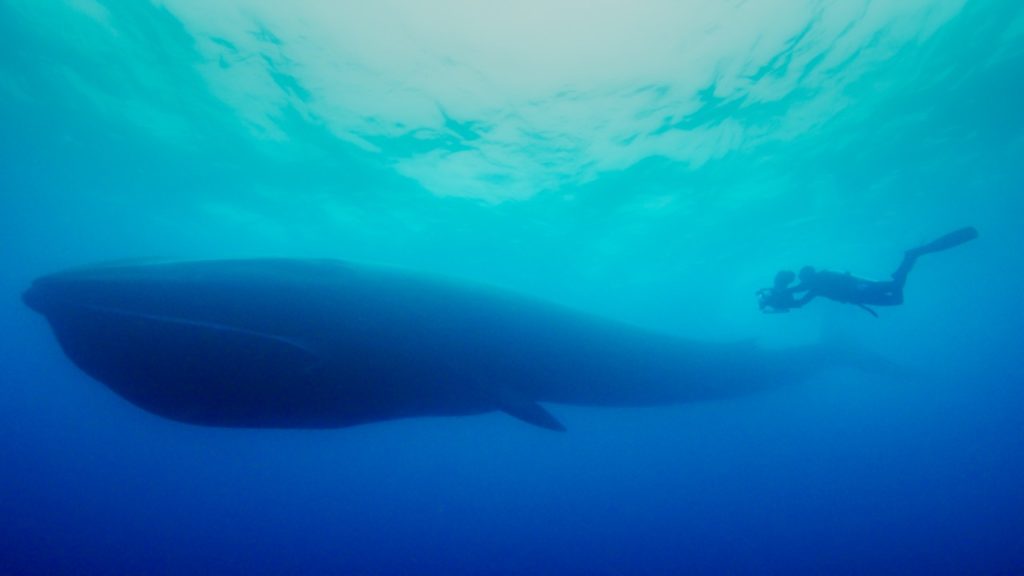
Bertie Gregory: I think the Poles. I think that there are a lot of amazing things there. In the first episode of the show, as I mentioned, we are going for the biggest gathering of whales, and I think that it is pretty extraordinary that it hasn’t been filmed on that scale yet, even though it is the second biggest animal in the world. How has nobody filmed that? So yeah, there is still plenty to film. I guess also what is interesting, is there are a lot of things that we think we know, and we bring in a new angle and a new piece of technology to it, and suddenly, you see it in a whole new light.
Urbasm: Yeah.
Bertie Gregory: For example, in another one of the episodes we film in Zambia, we were filming lions. And these lions, the pride we were following, specialize in hunting buffalo. So, basically, Africa’s grumpiest animal. And we used some new technology. The normal way that you’d film wildlife, like a lion or buffalo, is to have a tripod that is attached to the car, and you have to be stationary when you are using the camera. But instead, we were like, well let’s bring some new technology into this. So, we used a gyro-stabilized camera, which is like, if you have ever seen a Hollywood movie being shot from a helicopter, they have a big bowl hanging off the nose. We took one of those bowls and we put it on a 4 x 4 car, and that means that the car can travel and you can film at the same time, and it stabilizes the shot. So, you feel like you are on the hunt with them.
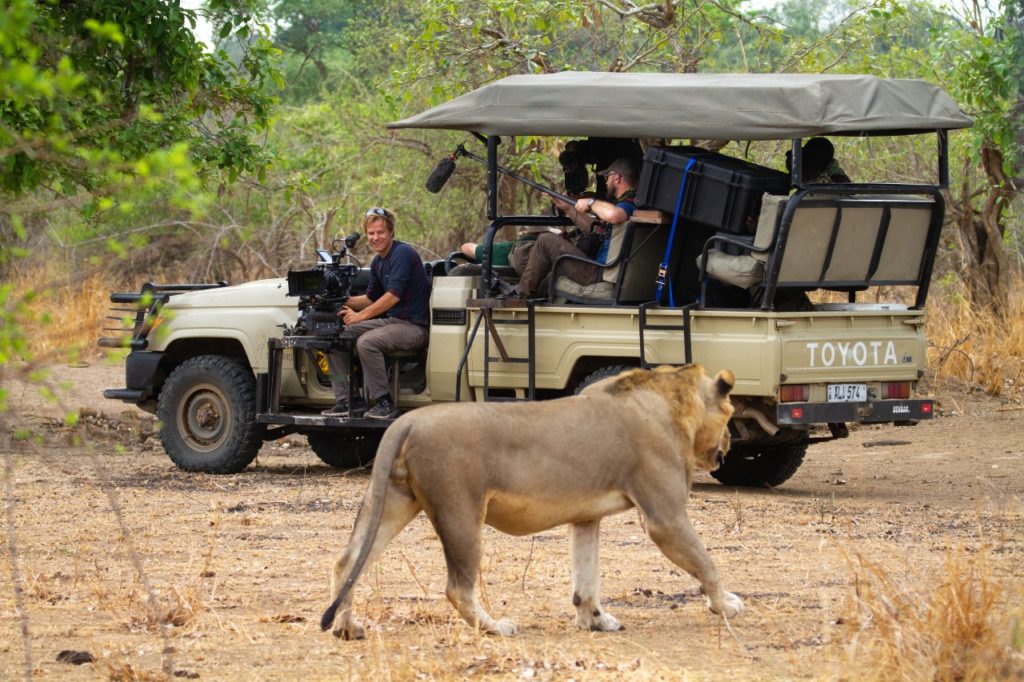
Urbasm: That sounds cool.
Bertie Gregory: But more than that, we wanted to show from above what this looks like. So, my friend Sam, he was on the gyro-stabilized camera, and I was on a drone overtop of this lion/buffalo hunt. And what is interesting from above, is you sort of get a bird’s eye view. You get a chess view. You almost feel like you are playing God. You can see what all the animals are thinking because of where they are. It was fascinating to see the tactics of the lions and how eight female lions try to take on 300 very angry buffalo. What was most surprising was seeing what tactics the buffalo used in their defense. And actually, the buffalo’s defense, in my opinion, was more impressive than the lion’s offense, and it was really interesting to see.
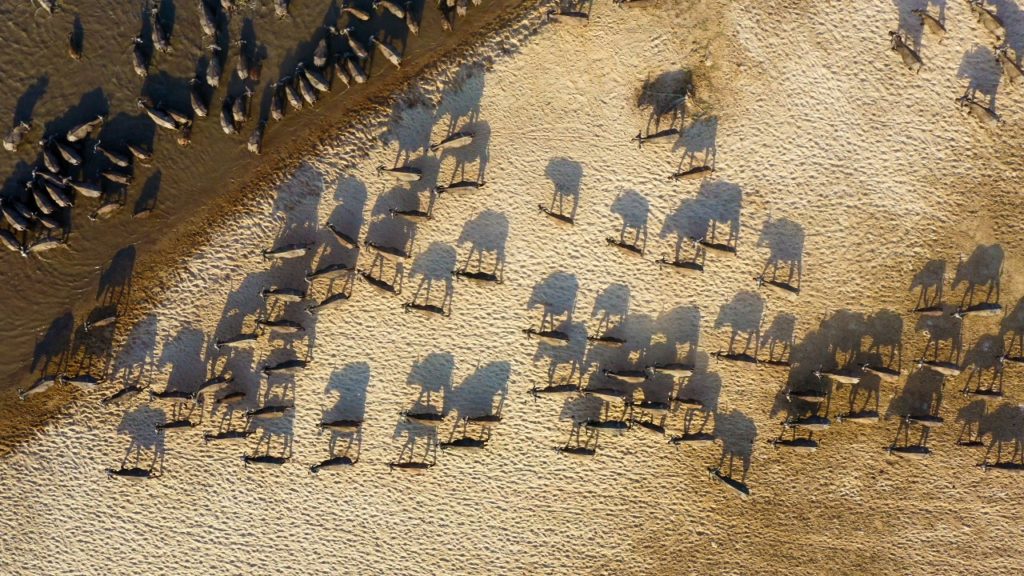
Urbasm: Yeah, we’re looking forward to that episode. Okay, so for us armchair adventurers, what three epic wildlife experiences would you say that every man should put on his bucket list?
Bertie Gregory: Right. Well, I am a big fan of the sea. So, it would have to be swimming in a kelp forest. Kelp forests are magical places, they are an amazing sort of 3D world, and I think that what is special about them is, that anytime I walk through a forest on land, I always think, wouldn’t it be cool if I could just fly around the trees? Well, when you get into the water, you are weightless, so you can fly around these underwater trees. Second, I don’t know if it is everybody’s cup of tea, but swimming with the leopard seal is pretty cool. Uh, but I would probably build up to the leopard seal, though. Get in the water with a few other types of seal, and get good at being in cold water. That requires a little bit of training.
Urbasm: Yeah, I think we’ll put that towards the tail-end of our list.
Bertie Gregory: The third thing. Well, I love seeing wildlife on a really big scale, when there are just loads of animals. I love that. Just noise all around you. A really amazing animal spectacle that I encourage everyone to see is also in Zambia. We filmed it for the Eagle episode. The eagles were hunting straw-colored fruit bats. People might be thinking, ‘Oh, what’s so interesting about bats?’
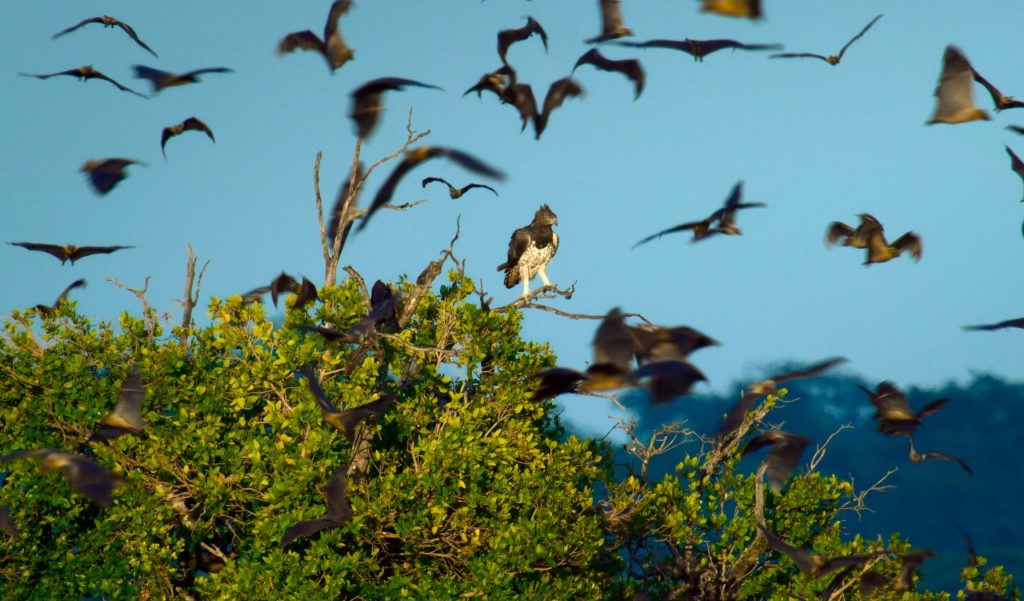
Bertie Gregory: Well, these bats are fascinating. What is really impressive about them is they gather in a little forest called Kesanka. It is about the size of two football fields. And in that forest, there are 10 million of these bats. 10… million… and they are not small. And every evening, just after sunset, all 10 million of these bats come out of the forest where they have been taking shelter and they erupt into the sky. The sky is this amazing orangey pink color, and I mean, 10 million bats all in the air at once, all around you. The sky becomes dark with bats… and the noise… and ah, it is amazing. I would get that at the top of your bucket list in terms of wildlife encounters for sure.
Urbasm: You had us at 10 million. Thank you, Bertie!
Bertie Gregory: Thank… you.
And now you should be prepared for this season’s “Epic Adventures with Bertie Gregory“, on Disney+ and National Geographic. As Bertie might say (we don’t know for sure, but we can imagine him saying this), the most epic part of any adventure should not be the end goal, but rather the adventure in getting there!
Here is a sneak peek:
Top photo: Bertie Gregory trying to stay on board as the sea conditions toss the boat violently. (Credit: National Geographic/Bertie Gregory for Disney+)
About Dr. Eric J. Leech
Eric has written for over a decade. Then one day he created Urbasm.com, a site for every guy.